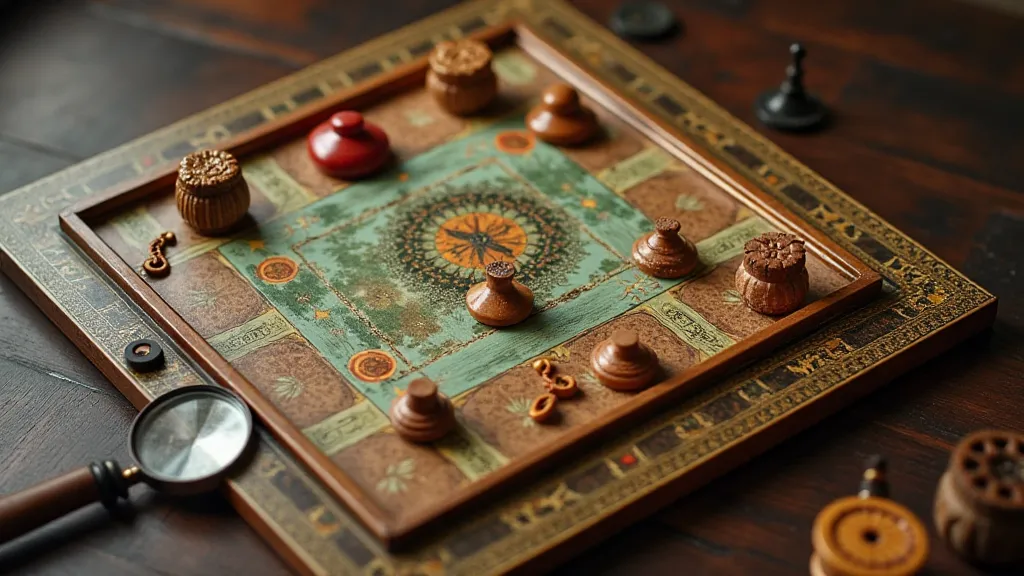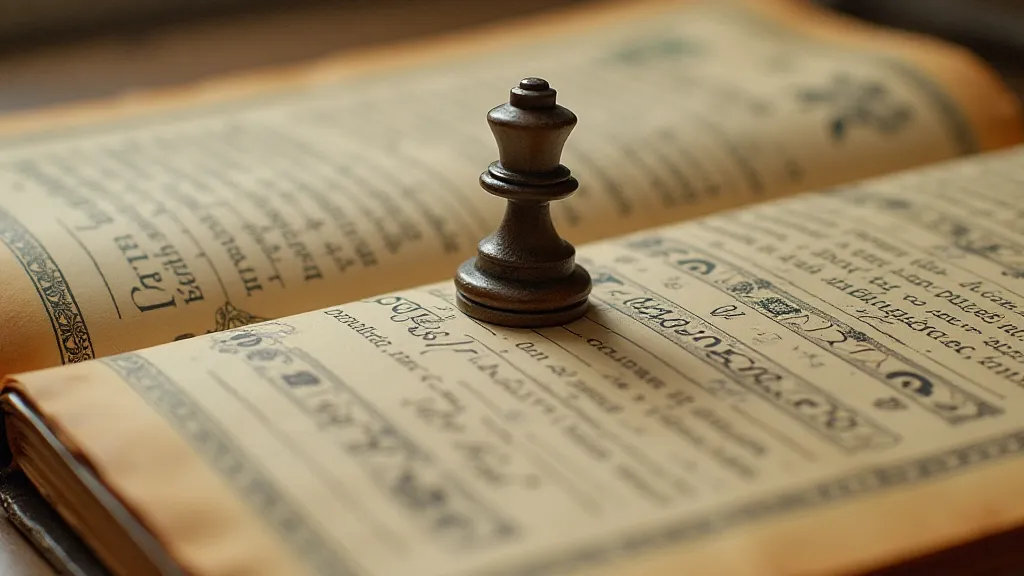The Ephemeral Kingdom: How Rulebooks Define and Limit Board Game Universes
There’s a profound melancholy that settles when you hold a truly antique board game. It's not just the fragile cardboard, the faded ink, or the brittle wooden pieces. It’s the understanding that you're holding a contained universe, meticulously crafted and then… abandoned. These forgotten board games, relics of vanished eras, whisper tales of aspirations and entertainment, all captured within the rigid boundaries of a rulebook. And it's those rulebooks, those seemingly dry documents, that are the key to understanding both the beauty and the heartbreaking limitations of these ephemeral kingdoms.
Think about it: a board game, at its core, is a narrative engine. It presents a scenario – a sprawling empire to conquer, a perilous journey to undertake, a fantastical mystery to solve. But the narrative isn't free-flowing. It's channeled, directed, *defined* by the rules. They dictate the acceptable actions, the permissible outcomes, the very nature of the world itself. The rulebook isn't just instructions; it's a constitution, a set of laws governing this manufactured reality. The beauty lies in the elegance of the system, the interconnectedness of its components. The limitation lies in its inflexibility.

The Architect and the Audience
Consider, for a moment, the designer, the architect of this board game universe. They spend countless hours constructing the lore, balancing the mechanics, playtesting endlessly. Their intention is to create an engaging, replayable experience. But once the rulebook is finalized, their influence wanes. The players become the inhabitants of their creation, but their freedom to reshape that world is severely curtailed. They are bound by the rules, compelled to interact within the framework established by the architect. It’s a peculiar relationship: creator and audience, intimately linked yet fundamentally separated.
I remember finding a copy of "Rienzi," a German board game from the 1930s, at an antique market. The box was crumbling, the board faded, and the wooden pieces were chipped. But something about the artwork – bold, stylized depictions of medieval battles – captivated me. The rulebook, written in German (thankfully, I found a partial English translation online), outlined a complex system of territorial conquest and political maneuvering. Playing it wasn’t just about strategy; it was about inhabiting the role of a 14th-century warlord, subject to the whims of dice and the constraints of the game's intricate rules. The feeling of holding that history, that contained reality, was powerful.
The Stone Mason’s Legacy: More Than Just Components
Many of these forgotten board games are particularly remarkable for their craftsmanship. Think of the attention to detail in the wooden pieces – meticulously carved miniatures, often hand-painted. Think of the quality of the board itself, often printed on thick, durable cardboard. In an era before mass production and digital printing, these games were labor-intensive creations, reflecting a commitment to quality that is rarely seen today. These games weren't just assembled; they were lovingly constructed, often by skilled artisans who took pride in their work. The meticulous carving of the wooden pieces, the careful printing of the board—these details speak volumes about a time when manufacturing prioritised quality and durability. The legacy of the stone mason, the craftsman who shaped the very components of these games, is intrinsically linked to their enduring appeal. These weren’t just commodities; they were objects of beauty and enduring value.
The materials themselves speak volumes. The feel of the linen-covered box, the weight of the wooden pieces, the crispness of the printed rulebook – these are tactile experiences that connect us to a bygone era. Restoration, when approached with care and respect, can be a way of preserving this legacy, of breathing new life into these forgotten treasures. It’s not about recreating them perfectly; it's about stabilizing them, protecting them from further decay, and allowing future generations to experience their unique charm. A slight patina of age shouldn’t be scrubbed away; it’s a testament to the game’s journey through time.
The Clockwork Heart of Nostalgia: Why These Games Resonate
Beyond the materials and the craftsmanship, there's something deeply resonant about these games. They tap into a powerful sense of nostalgia, a yearning for simpler times and a connection to the past. The very act of holding a vintage board game, of following its often-complex rules, is a form of time travel, a portal to a different era. This feeling is deeply intertwined with the history of play itself, the way games have reflected and shaped our culture. Exploring the clockwork heart of nostalgia that drives this fascination with forgotten games reveals a universal human desire to connect with our heritage and relive cherished memories.
Echoes in the Polyhedral Dice: Tracing Lineage in Tabletop Design
The influence of these antique games can also be seen in the design of modern tabletop experiences. Many contemporary games borrow elements from their predecessors – from the intricate rule systems to the evocative artwork. Understanding the lineage of these games helps us appreciate the evolution of the hobby and the enduring power of classic design. It’s fascinating to consider how a game like “Rienzi,” with its complex system of territorial conquest, might have subtly influenced later strategy games. Tracing these echoes in the polyhedral dice allows us to better understand the lineage of tabletop game design and the continuous cycle of innovation and inspiration.
The Limits of the System
Yet, the rulebook also represents a profound limitation. It defines the possible, and in doing so, it restricts the imaginative potential of the game. House rules, modifications, and outright disregard for the printed instructions are often attempts to circumvent these limitations, to inject a little bit of player agency into a system that is inherently rigid. While these adaptations can sometimes enhance the experience, they also represent a tacit acknowledgement of the original system’s shortcomings.

Consider the inherent biases embedded within the rules. These games were created within specific cultural and historical contexts, and those biases inevitably seep into the mechanics and the narrative. Gender roles, social hierarchies, and even political ideologies can be subtly reinforced through the design of the game. Recognizing these biases is not about condemning the creators; it’s about understanding the limitations of the system and appreciating the importance of diverse perspectives in game design today. It is a stark reminder that games are not neutral objects; they reflect the values and assumptions of the time in which they were created.
The Alchemist's Crucible: Transmuting the Past into the Present
The process of restoring these games is akin to an alchemist’s work – a careful transformation of something old and damaged into something new and vibrant. It’s about breathing new life into a forgotten treasure, allowing future generations to experience its unique charm. This isn't merely about fixing broken pieces; it’s about understanding the cultural context of the game, appreciating its historical significance, and transmuting the past into the present through careful restoration and preservation. It’s a testament to the enduring power of these games and the importance of preserving our cultural heritage.
The Silent Guardians of a Lost Era
Ultimately, these forgotten board games are more than just pieces of cardboard and wood. They are time capsules, silent guardians of a lost era. They offer us a glimpse into the past, a chance to connect with the people who created and played them. The rulebooks, those often-overlooked guardians, hold the key to unlocking their secrets. They remind us that even the most meticulously crafted universes are ultimately bound by the limitations of human creation, and that the true magic lies not just in the game itself, but in the shared experience of playing it – and contemplating its place in the grand sweep of history.
I recently encountered a copy of "The Game of Life" from the 1920s. The dramatic shift in the mechanics, particularly the depictions of career choices and societal expectations, offered a stark contrast to modern iterations. It was a poignant reminder that games, like all cultural artifacts, reflect the values and anxieties of their time. To hold these games is to hold a conversation across generations, a silent exchange of experiences and perspectives.
The value isn't just in the monetary sense, but in the appreciation of the artistry and the reflection it allows. These aren't just games; they're pieces of history, waiting to be rediscovered and appreciated. And the rulebooks, those often-overlooked guardians, hold the key to unlocking their enduring appeal.






